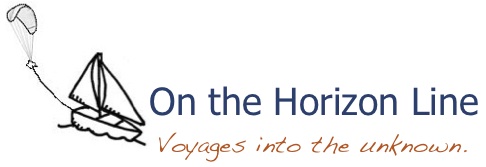Off To See The Wizard
The blue-green waters surrounding French Polynesia just turned into a yellow brick road. Rob gets to be the Scarecrow, and I’m gonna try my hand at Dorothy. We’ve nominated a blacktip shark to be Toto, and the thousands of coral heads lurking just beneath the surface play the Wicked Witches and flying monkey things.
I know. You’re asking if I’m writing this while on some weird island mushroom, right? Or assuming I got a tad too much sun, maybe? Nope. I’m just letting you know that Rob and I have joined a new sailboat. It’s motto? “Off to see the Wizard.” Check out the boat’s blog if you don’t believe me. John and Sue Campbell, a semi-retired couple from Sonoma County, California, have generously offered to share their floating home with us for a bit.
Wizard is a Choate 40 racer-cruiser, very similar in layout (and speed!) to Kayanos, our last ride. We like her, and we really like John and Sue. The four of us all have a similar sense of humor, which is basically the most important ingredient for successfully sailing around in the largest ocean on earth. Sue’s learning to play the ukelele, and doesn’t mind that Rob and I belt out tunes at all hours. John is a laid-back, mostly-Buddhist captain (unless someone tries to anchor too close) who misses microbrews as much as I do.
We met Wizard and her crew our first day on land in Nuku Hiva after the big passage, and hit it off immediately. A month later, John and Sue offered to take us on a day sail to north Fakarava so we could “look for another ride” when Kayanos sailed to Tahiti. Well, we didn’t look very long … the day sail turned into many days as we sailed north to Toau. We’ll likely make the 2-day passage to Tahiti aboard Wizard, as well. In fact, John keeps mentioning that we should just go ahead and buy Wizard when they finish their sailing adventure this November.
Guess we’ll see where our yellow brick road ends up. Meanwhile, Rob and I will make sure to keep our bare feet from clicking together, since we’re not definitely not ready to go home.





























